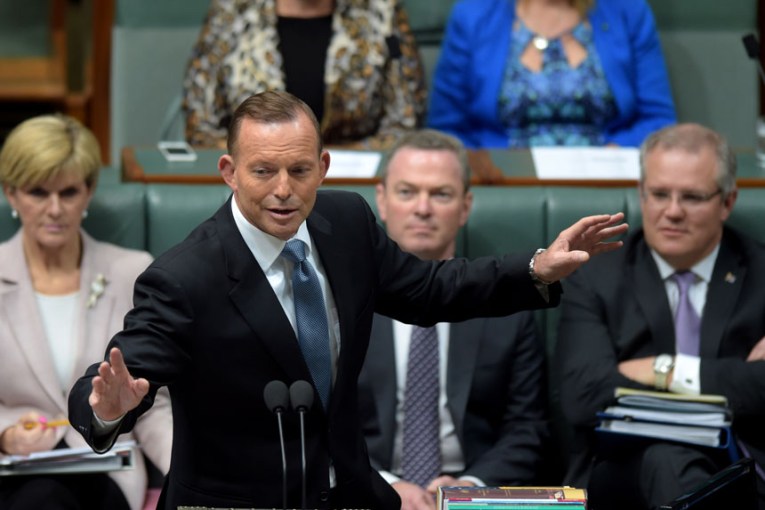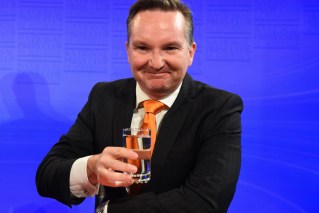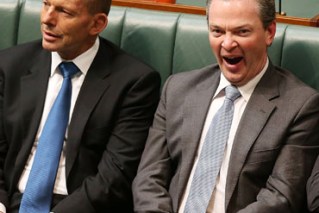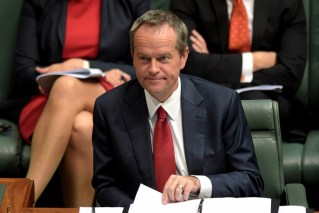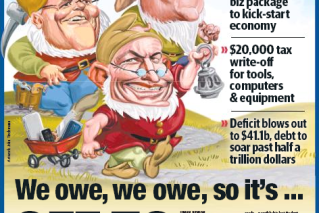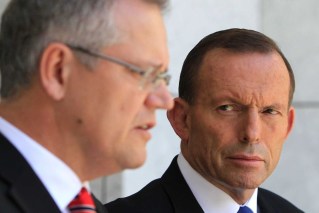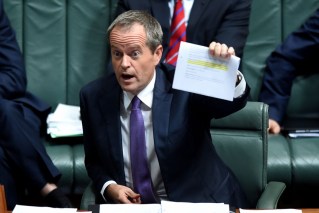The winners and losers of the 2015 budget

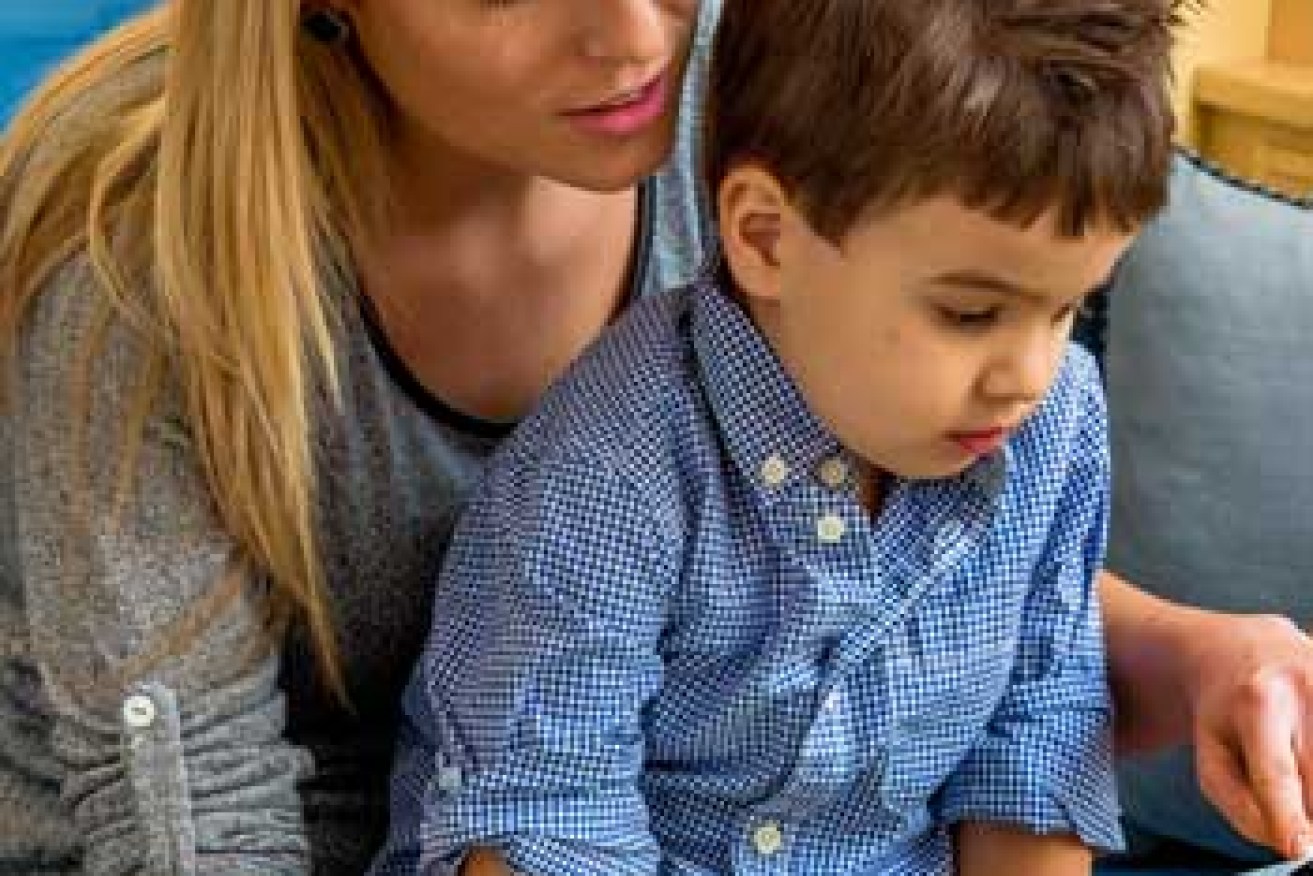
Shutterstock
Stung by the reaction to last year’s offering, the Government has delivered a more upbeat second budget that it hopes will be popular with voters.
Small business, parents with young children, farmers and national security are among those who benefit most.
• Strangest things in Budget 2015
• Hockey delivers ‘have a go’ budget
• Paul Bongiorno: a budget to save Joe’s bacon
Middle-income earners, foreign visitors and tax-avoiding multinationals fare worst. Here are the winners and losers from Joe Hockey’s ‘have a go’ budget.
THE WINNERS
Small business
As expected, the tax burden for small business owners – those with annual turnover under $2 million – will be lowered to the tune of 1.5 per cent, costing the Government $1.45 billion.
For smaller, unincorporated businesses – sole traders, partnerships, trusts, etc – there will be a 5 per cent tax discount.
To help small businesses invest in new tools or machinery the Government will provide an immediate tax deduction of all assets under $20,000. Small businesses can buy as many items under that amount as they like and receive that deduction on each one, starting from budget night.
For start-ups, business registration will be streamlined, with one website acting as a one-stop-shop for setting up a business. Start-ups will also be able to immediately deduct expenses such as legal fees they incur when setting up a new company.
Parents of young children
Boosting access to child care constitutes one of the budget’s main sweeteners, with $3.5 billion in new money earmarked over five years.

Boosting access to child care was a cornerstone of the budget. Photo: Shutterstock
However casting a shadow over these measures are the cuts to welfare from last year’s budget, which the Government says must be passed in order to fund the childcare package.
From July 1 2017, parents can access the Child Care Subsidy, a single benefit – based on family income and replacing several other benefits – that will contribute a percentage of the overall child care fee parents pay.
Families earning $65,000 or less will get 85 per cent of their fees subsidised. That subsidy will reduce to 50 per cent for families earning $170,000 or more.
Because the Government wants to move more people into work, the amount of child care hours subsidised will be “closely aligned” to how much time parents spend working, training, studying or volunteering.
National security
With homegrown terrorism a major area of concern for the Government, this budget sets aside $450 million to boost national security by giving various intelligence agencies more resources.
Of that, $296 million will go boosting the technological capabilities of the country’s intelligence gathering agencies, while the new border protection service the Australian Border Force will get $50 million to train its officers.
The Government will also give $131 million to the telecommunications industry to help it comply with the new metadata collections laws, which forces telcos to store the metadata of their customers for two years.
There will also be $22 million for social media monitoring that will help counter the online extremist dogma of groups like Islamic State.
Defence
Australia’s military operations in Afghanistan, Iraq and the Middle East will get a $750 million boost in this budget, part of the effort to combat terrorism at its source.
The budget lays out $403 million over four years for Australia’s contribution to fighting Islamic State through both air combat missions and support operations in Iraq.
Of that, $142 million will go towards Australia’s efforts to rebuild the capacity of Iraq’s army, seen as key to helping the country stabilise itself.
There will also be $43 million made available over three years for Operation Manitou, which looks to combat terrorism and piracy in the waters around the Middle East.
Rural Australia
Farmers battling drought will get a lifeline with $250 million set aside to continue the Drought Concessional Loan Scheme for another year.
Farmers will also be able to claim fences and new water storage as tax write-offs.
$25 million will be made available to help farmers in drought-affected areas soften the impact of pest animals.
Infrastructure in drought-affected areas will get a $35 million boost through the establishment of a new grants system.
And for those feeling the emotional impacts of working on the land without rain, $20 million will go toward extending social and community support services for an extra 20 local government areas. There will also be an extra $1.8 million for more counsellors.
Cattle farmers in the north of the country will also benefit in $101.3 million in funding over four years to improve road infrastructure for cattle supply chains.
Medical research
Originally tied to the ill-fated GP co-payment, the Government’s signature medical research policy is one of the few contentious measures that have remained in this year’s budget.
The Government has announced $440 million for the scheme, to be paid for as part of the review of medical procedures, which is expected to save the Government over $1 billion.
Northern Australia
One of the centrepieces of Joe Hockey’s budget is the Northern Australian Infrastructure Facility, which the Treasurer says will ‘unleash our nation’s potential’.
The Facility will make $5 billion available for concessional loans for infrastructure in the north of the country.
The north will also benefit in $101.3 million in funding over four years to improve road infrastructure for cattle supply chains.
THE LOSERS
Middle-income earners
While middle income earners stand to benefit from a range of Government policies, including the childcare changes, some of the heavy lifting of the return to surplus will fall upon them through bracket creep.
Bracket creep occurs when increases in wages to account for cost of living pressures push people into higher income tax brackets.
These wage increases are normally offset by adjustments in the tax brackets, however these are budgeted to remain steady into the future.
The states
For premiers around the country hoping the Government would reconsider last year’s massive cuts to health and education funding there is no good news in the budget.
The Federal Government last year used the end of funding arrangements in health and education with the states to make these cuts, and there is no evidence in this year’s budget that they’re planning on reconsidering this.
Maternity leave ‘double dippers’
In a complete reversal of the policy the Government took the last election, new parents with workplace maternity leave schemes will no longer be able to access the Federal Government’s policy.
Under previous arrangements parents were able to access 18 weeks leave at the minimum wage on top of any private leave they had, but the Government says this policy of ‘double dipping’ will no longer be tolerated.
People with schemes that are more generous that the federal scheme will not be eligible for any payment, while those with schemes less generous will only be able to access the gap between the two.
The Government says the changes will net approximately $1 billion over the forward estimates.
Stay at home parents
As part of the Government’s plan to get mothers into work, stay at home parents will lose access to childcare rebates.
While there is protection for low income earners, those whose family income is above $65,000 per year will no longer be eligible for any childcare assistance.
Foreigners
People from overseas coming to Australia on a working holiday will no longer be eligible for the $18,000 tax free threshold, and instead have to pay tax at 32.5 per cent on every dollar they earn up to $80,000.
The Commonwealth’s coffers are also set to benefit to the tune of $651 million over four years from tougher enforcement and penalties for foreign investment law breaches, especially related to real estate, as well as significant new application fees.
The budget forecasts that $735 million in extra revenue will be raised, while only $83.6 million is being budgeted to be spent on extra compliance and enforcement activities.
Tax-avoiding multinationals
The Government is introducing legislation into Parliament to clamp down on corporate profit shifting and to extend the GST to digital services provided by foreign firms.
The laws, which target multinational corporations with global revenues of $1 billion or more, seek to outlaw corporate structures and transactions which are principally designed to avoid tax in Australia.
Under new, tougher penalties, companies caught cheating will have to pay double what they owe plus interest.
Downloaders
The Government is set to profit from overseas businesses supplying digital products and services to Australians, which will be subject to GST from July 1, 2017.
The so-called ‘Netflix tax’ is expected to raise $350 million for the states in the first two years after it is introduced.
Anti-vaxers
The Government’s ‘no jab no pay policy’ is expected to hit parents whose children don’t have up to date vaccinations to the tune of $508 million over the forward estimates.
Under the policy families will no longer be eligible for subsidised child care for the Family Tax Benefit Part A end of year supplement.
Exemptions will only apply for medical reasons.
THE NEUTRALS
Retirees

81,000 pensioners who claim the part pension will no longer be eligible. Photo: Shutterstock
The Government has announced it will adjust the thresholds for assets tests on the pension, meaning 172,000 pensioners at the lower end of the pension will be better off, while 81,000 pensioners who currently claim the part pension will no longer be eligible.
Previously singles over the age of 65 with assets (excluding the family home) of less than $775,000 were able to claim the part pension, however the new limit will now be $550,000.
The Government confirmed these changes will replace efforts to change the way the pension was indexed, which would have negatively impacted pensioners more over the long term.
Health
Patients will see benefits in this budget, including being able to get Medicare rebates for some eye tests, tests for gastric reflux and radiation therapy for early stage breast cancer, as well as second opinions on some pathology services.
But the Government will find $1 billion in savings by “rationalising and streamlining” some programs, including dental workforce programs and axing any GP super clinics that have not yet been built.
The Government will also save money by cracking down on unnecessary diagnostic imaging, and rebates for CT scans and some items for children undergoing surgery will be reviewed.
However, there will be $1.6 billion made available for new and amended listings on the PBS, including more effective treatments for melanoma.
Young people
A $330 million Youth Employment Strategy will help ease young people into the workforce, with money for areas of high youth unemployment, young people with mental health concerns and young migrants. The package also includes a 6,000 place national work experience program, which offers wage subsidies for employers to hire young people after four weeks of unpaid work.
There are restrictions to young welfare recipients. From January 1 2016, 15-21-year-old early school leavers will have to work 25 hours a week to qualify for income support until they turn 22 or earn a year 12 certificate III qualification.
Newly unemployed young people under 25 will have to wait four weeks before qualifying for payments, and under the ‘no show no pay’ principle, anyone who misses appointments or work for the dole will be have their payments suspended. From 1st July 2016, the eligibility age for Newstart Payments will increase from 22 to 25.
From January 2016, university graduates living and working overseas for more than six months will be required to make repayments on their HELP loans, recouping $26 million over four years.
Apprentices get $664 million, including $7,500 scholarships for employers to take on and train unemployed young people, and another $1.8 million to continue the Trade Support Loans.
The 2015 budget also foreshadows the re-introduction of university deregulation in 2016, but there are no details on what the third attempt at these higher education changes may entail.

